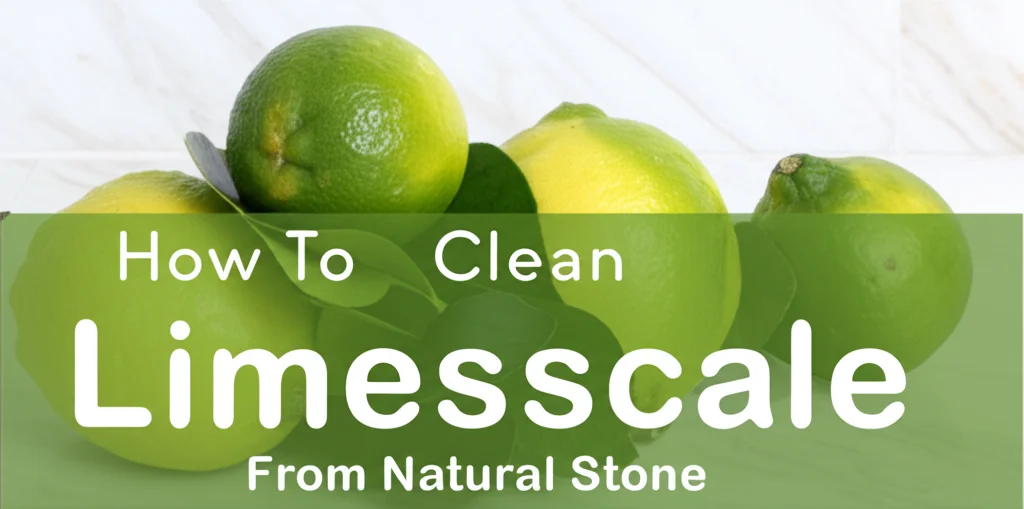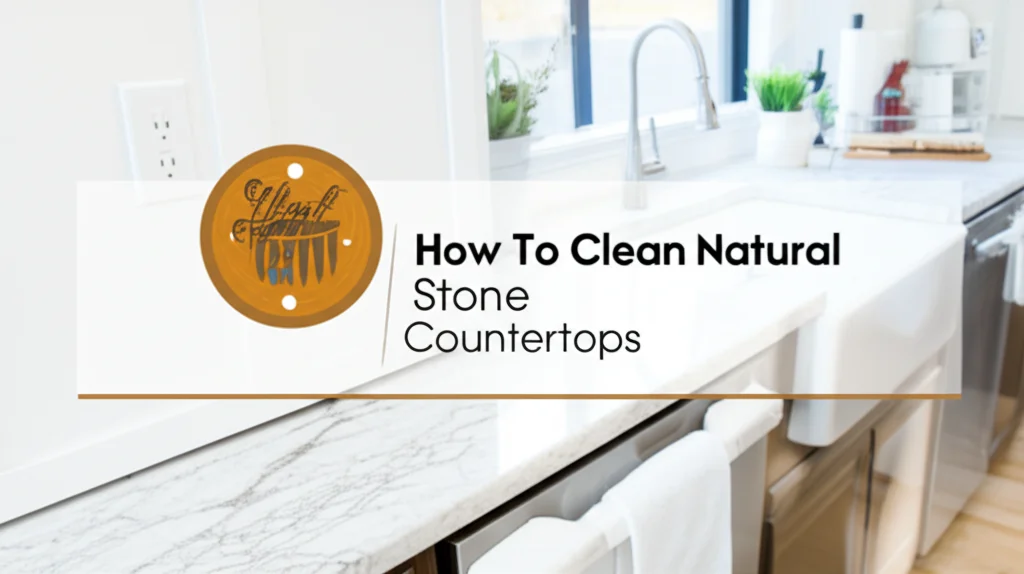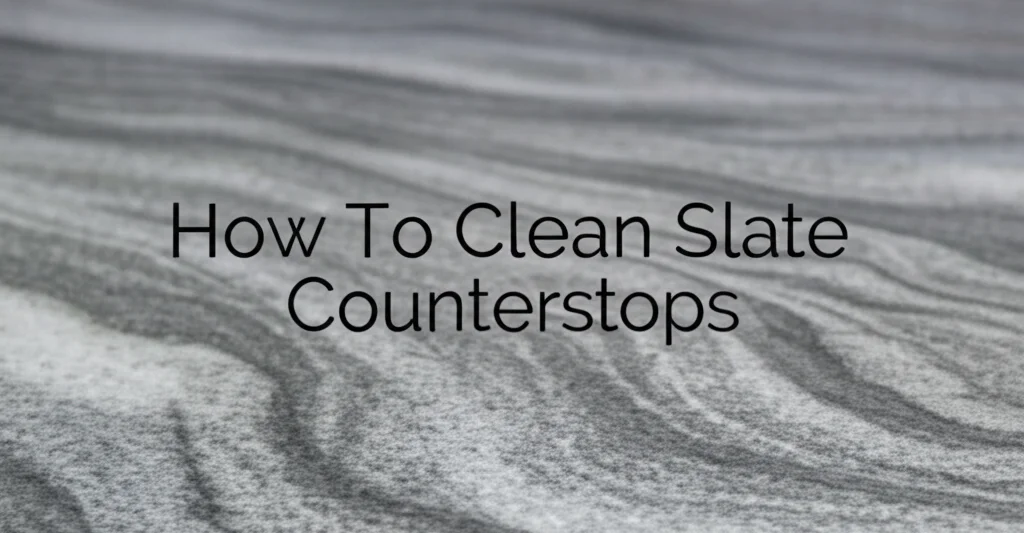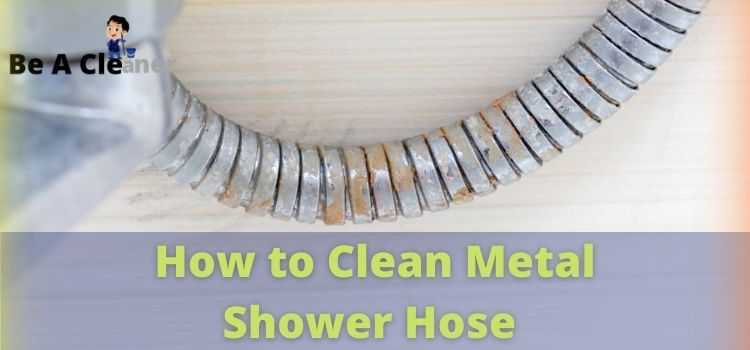· Stone Care · 6 min read
How To Clean Limescale From Natural Stone

Removing Limescale From Natural Stone: A Comprehensive Guide
Have you noticed a white, chalky buildup on your beautiful natural stone surfaces? That’s likely limescale, a common problem caused by hard water. Don’t worry, restoring your stone’s shine is achievable! This article will guide you through effective and safe methods for cleaning limescale from natural stone, protecting its integrity and beauty. We’ll cover everything from identifying the stone type to choosing the right cleaning solutions and techniques. Let’s get started and bring back the luster to your stone surfaces.
Takeaway:
- Identify your stone type before cleaning.
- Avoid harsh acids like vinegar and lemon juice.
- Use pH-neutral cleaners specifically designed for stone.
- Always test cleaning solutions in an inconspicuous area first.
- Regular cleaning prevents severe limescale buildup.
What is Limescale and Why Does it Affect Natural Stone?
Limescale forms when hard water, rich in calcium and magnesium, evaporates. These minerals are left behind as a deposit, creating that unsightly white film. Natural stone, particularly porous types like marble, travertine, and limestone, is especially susceptible to limescale buildup. The porous nature allows water to penetrate, leaving mineral deposits within the stone itself. Over time, this can dull the finish and even cause etching or damage. Understanding this process is the first step in effectively tackling the problem.
Identifying Your Natural Stone
Before you begin cleaning, it’s crucial to identify the type of natural stone you’re dealing with. Different stones react differently to cleaning agents. Using the wrong product can cause irreversible damage. Here’s a quick guide to common types:
- Marble: A classic, relatively soft stone, prone to etching from acids.
- Granite: A very durable, less porous stone, more resistant to damage.
- Limestone: A porous sedimentary rock, susceptible to staining and etching.
- Travertine: Another porous sedimentary rock, often used for flooring and backsplashes.
- Slate: A fine-grained metamorphic rock, generally durable but can be porous.
If you’re unsure, consult a professional stone restoration specialist. Knowing your stone type will dictate the safest and most effective cleaning approach.
Safe Cleaning Solutions for Limescale on Stone
Harsh chemicals like vinegar, lemon juice, and abrasive cleaners can severely damage natural stone. These acids etch the surface, creating dull spots and potentially causing permanent damage. Instead, opt for pH-neutral cleaners specifically formulated for natural stone. Here are some safe options:
- Stone-Specific Cleaners: These are readily available at hardware stores and online. Look for products labeled “pH-neutral” and “safe for natural stone.”
- Mild Dish Soap: A very diluted solution of mild dish soap and warm water can be effective for light limescale buildup.
- Baking Soda Paste: For more stubborn deposits, create a paste of baking soda and water. Apply gently and rinse thoroughly.
- Commercial Limescale Removers (Stone-Safe): Some commercial limescale removers are specifically designed for use on natural stone. Always read the label carefully and test in an inconspicuous area.
Remember, gentle is key! Avoid anything abrasive or acidic. You can find more information on choosing the right cleaning products at https://www.beacleaner.com/what-is-the-best-cleaning-solution-for-ceramic-tile-floors/.
Step-by-Step Limescale Removal Process
Now that you have the right cleaner, let’s get to work! Follow these steps for effective limescale removal:
- Dust and Debris Removal: Begin by thoroughly dusting or vacuuming the surface to remove loose dirt and debris.
- Apply Cleaner: Apply your chosen cleaning solution to the affected area. Avoid saturating the stone, especially if it’s porous.
- Gentle Agitation: Use a soft cloth or sponge to gently agitate the cleaner. Avoid scrubbing vigorously, as this can damage the surface.
- Dwell Time: Allow the cleaner to dwell for a few minutes, following the manufacturer’s instructions.
- Rinse Thoroughly: Rinse the surface thoroughly with clean water. Ensure all traces of the cleaner are removed.
- Dry Completely: Dry the surface with a clean, soft cloth.
For particularly stubborn limescale, you may need to repeat the process. Patience and gentle cleaning are crucial for preserving your stone’s beauty.
Dealing with Stubborn Limescale Deposits
Sometimes, limescale buildup is particularly persistent. Here are a few techniques for tackling stubborn deposits:
- Baking Soda Poultice: Create a thicker paste of baking soda and water. Apply it to the affected area and cover with plastic wrap. Let it sit overnight, then rinse thoroughly.
- Commercial Stone Poultice: These poultices are designed to draw out stains and mineral deposits from porous stone. Follow the manufacturer’s instructions carefully.
- Professional Stone Restoration: If you’ve tried everything and the limescale remains, it’s time to call in a professional. They have specialized tools and knowledge to safely remove stubborn deposits.
Don’t be afraid to seek professional help if you’re unsure about tackling a particularly challenging limescale problem.
Preventing Future Limescale Buildup
Prevention is always better than cure! Here are some tips to prevent future limescale buildup on your natural stone surfaces:
- Water Softener: Installing a water softener can significantly reduce the mineral content in your water, minimizing limescale formation.
- Regular Cleaning: Clean your stone surfaces regularly with a pH-neutral cleaner. This prevents limescale from building up over time.
- Wipe Up Spills Immediately: Promptly wipe up any water spills, especially in areas prone to limescale buildup.
- Seal Your Stone: Sealing your natural stone creates a protective barrier, making it less porous and resistant to water penetration. You can learn more about sealing stone at https://www.beacleaner.com/how-to-clean-hardwood-floors-with-vinegar/.
By implementing these preventative measures, you can keep your natural stone surfaces looking beautiful for years to come.
FAQ About Cleaning Limescale From Natural Stone
Q: Can I use vinegar to clean limescale from marble?
A: No, absolutely not! Vinegar is acidic and will etch marble, causing permanent damage. Always use a pH-neutral cleaner specifically designed for marble.
Q: How often should I clean my natural stone to prevent limescale buildup?
A: Regular cleaning, once a week or bi-weekly, is generally sufficient. The frequency will depend on the hardness of your water and the level of use the surface receives.
Q: What is a stone poultice, and how does it work?
A: A stone poultice is a paste-like substance that draws out stains and mineral deposits from porous stone. It works by absorbing the impurities over time.
Q: Is it possible to repair etched natural stone?
A: Minor etching can sometimes be polished out by a professional stone restoration specialist. However, severe etching may be irreparable.
Q: Can I use a steam mop on natural stone?
A: While some stones can tolerate steam cleaning, it’s generally not recommended, especially for porous stones. The heat and moisture can exacerbate limescale buildup and potentially damage the stone. You can find more information on steam mops at https://www.beacleaner.com/can-you-use-a-steam-mop-on-linoleum/.
Conclusion
Cleaning limescale from natural stone requires a gentle approach and the right cleaning solutions. Remember to identify your stone type, avoid harsh chemicals, and always test in an inconspicuous area first. By following the steps outlined in this guide and implementing preventative measures, you can restore your stone’s beauty and protect it for years to come. Don’t hesitate to consult a professional if you’re unsure about any aspect of the cleaning process. Maintaining your natural stone is an investment in the beauty and value of your home, so take the time to do it right!




